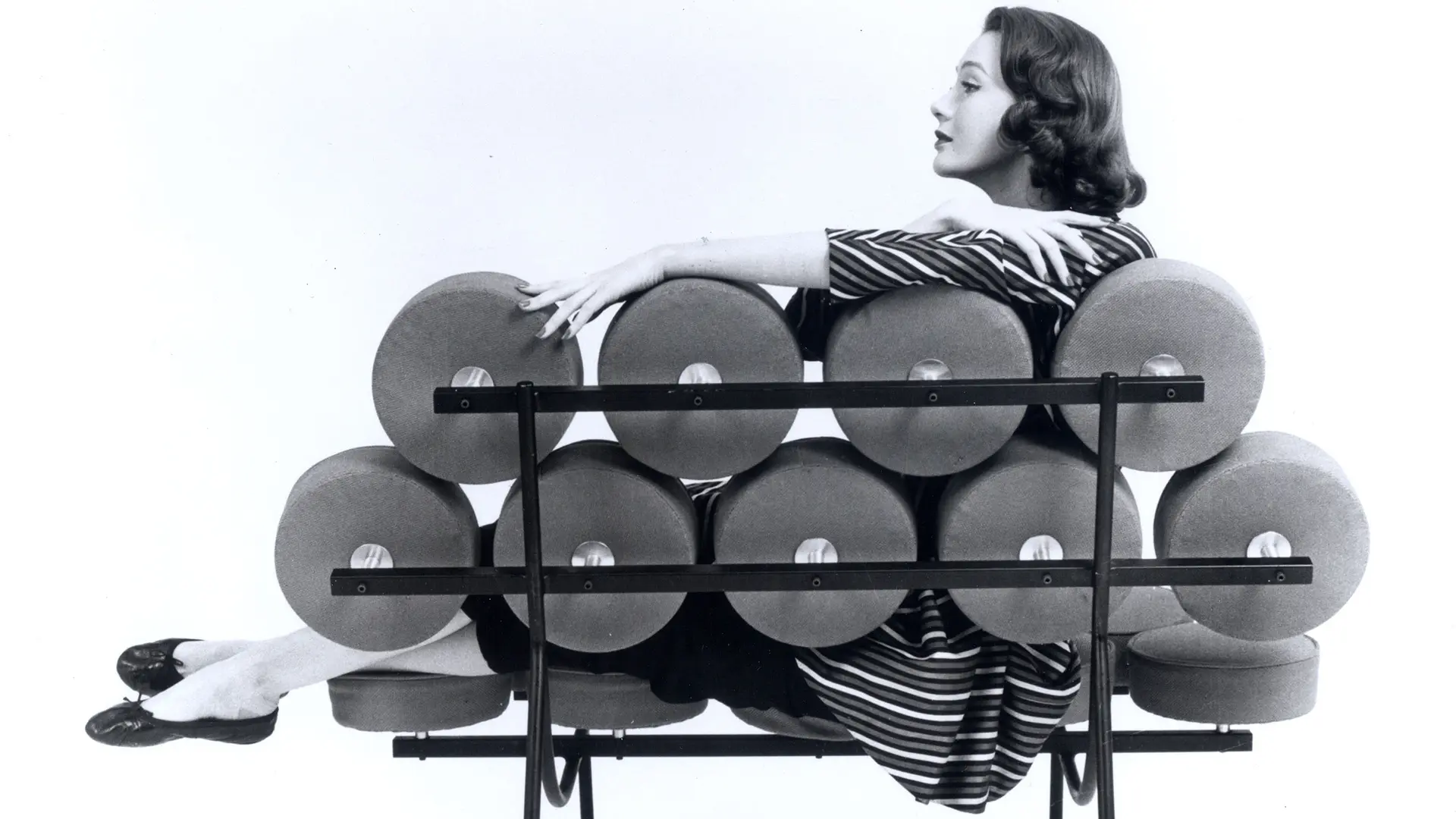From BIG to David Chipperfield, Frank Gehry to Snøhetta: a world tour of the best buildings set to open in 2026

Hilda Longinotti of the George Nelson Office, posing on a Marshmallow Sofa, c. 1956. Courtesy of Herman Miller Archives.
This book investigates what lies behind American Mid-Century Modernism’s aesthetic seduction
The thesis is clear: in the middle of the last century, in the United States modern design was used as a vehicle for (not too) concealed political messages in a society dominated by racial and sexual discrimination, creating a short-circuit between ethics and aesthetics that conditioned consumers. Kristina Wilson, a Professor of Art History at Clark University and author of Mid-Century Modernism and the American Body. Race, Gender and the Politics of Power in Design, is in no doubt about this, having compared previous studies and, in particular, browsed through vintage annals of “Life” and “Ebony”, two commercially-successful lifestyle magazines that were symbols of two contrasting worlds: the predominantly white American middle class, and readers from the African-American community. In article after article from these two magazines, she closely studied the adverts, particularly from companies that, for the first time, were offering modern lines of furniture, and companies that used that furniture as a setting. “For white audiences, modern design was a tool of control and exclusion, a prop to maintain white racial exclusivity. For the black audience, it was a source of power and social action,” she explains. She goes on to examine the poses of the models in the shots, as well as the relationships between furnishings and how interiors were spatially defined, between houses and their external context, between apparently innocent promotional statements about products and the promotion of family and, indeed, social values. Backing up her thesis, in advertisements dedicated to household hygiene products naïf sketches drawn by illustrators in vogue at the time combine modern style with the concept of cleanliness. The author reminds us that it is by no means coincidental that this style has come down to us attached to the adjective “clean”, with its frill-free geometries, honest materials and costs. Think about it, she seems to say, pointing out how everything is arranged to suggest the “whiteness” of the white world, in exclusive suburbs far from the city centre, leaving out everything that is foreign, everything to do with black people. On the contrary, for black people the most contemporary settings – never associated with domestic cleaning products – become an ambassador for lifestyle emulation to foster emancipation and create a much-sought-after home atmosphere that was warm, comfortable and an expression of security and social trust: the homologation of a privileged world, on the one hand, and a vision of redemption through a dignified life, on the other. But it is more than just photographic rhetoric that reveals the open spaces of these new homes, without internal divisions or divisions from the outside, promising an idyll of rationally-circumscribed living. There’s more, too, on the advertising sets for new furniture, hinting at the ambiguity of sex appeal contained in a beautiful formal silhouette: “These photographs suggest that in the 1950s, white designer chairs kept white women both in view and in their place. The designs were somehow invested in the exercise of control,” associating women with the domestic sphere and access to certain things reserved only for certain women. Wilson also delves into Hermann Miller’s analysis of communication, to which she devotes an entire chapter. She reminds us that the design world itself was not inclusive. All it takes is a quick scan of the faces of popular designers of the day – very few women (and those who had jobs generally filled secondary roles), and practically no African Americans – to whom we owe the establishment of the new stylistic dictates presented and disseminated through the products and theoretical essays the author has so scrupulously examined. Her comprehensive investigation extends to decorating tips and gift items, starting with equipment recommended for staging the perfect cocktail party, and closing with collections of souvenirs from exotic travels. Without denying the appeal Modernism continues to hold, this book offers another perspective on its history. One to read, perhaps, as you settle into a beloved vintage armchair, delighting in free, ideal access to the floating, elegant and luminous world it once expressed.
Title: Mid-Century Modernism and the American Body. Race, Gender and the Politics of Power in Design
Author: Kristina Wilson
Publishing House: Princeton University Press
Year of publication: 2021
Pages: 264
Language: English


 Stories
Stories








